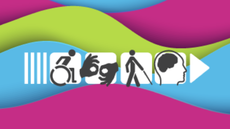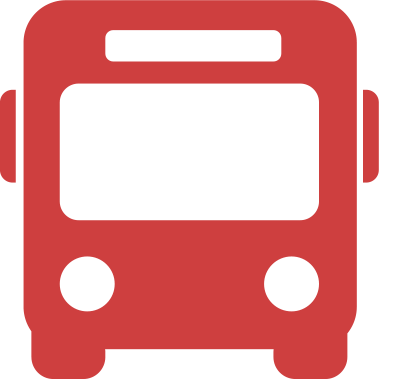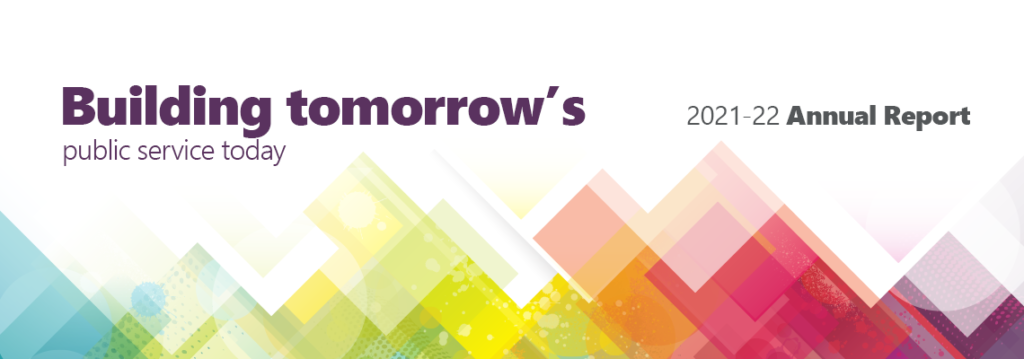
In This Edition
Let’s Talk Accessibility
- Season’s Greetings from the HRC Executive Team
- Accessibility by Design — Public Services and Procurement Canada
- Accessibility Tips and Tricks
- New Practical Tools to Support You in Your Role and Development
- Community of Practice Spotlight: Disability Inclusion and Workplace Accommodations
- What You Said: Community Survey on Accessibility Best Practices
- Did You Know?
- What’s New?
- What’s Upcoming?
- Contact Us
Season’s Greetings from the HRC Executive Team

With the holidays quickly approaching, we would like to extend our deepest gratitude to each and every one of you for yet another incredible year of leading people management with excellence and humanity!
We have had many occasions in 2022 to connect as a community from coast to coast to coast, from our HRC meetings and HRC SmartShops to the Michelle C. Comeau Human Resources Leadership Awards and everything in between! We look forward to many more opportunities in the new year to connect and strengthen our vast and diverse community.
While there are far too many collective accomplishments to list, reflecting back on them brings us a great sense of pride to be part of such an invaluable functional community. You have developed and implemented critical policies and programs from the ground up, such as the vaccination policy and hybrid work models to drive sustainable change while navigating continued pandemic health measures. You were instrumental in advancing anti-racism, diversity, equity, inclusion and accessibility initiatives across the public service. Additionally, your important work served to foster physical and psychologically healthy workplaces, which has never been more important than in today’s environment. Thanks to your unwavering drive, partnership and professionalism, the HR Community has been at the heart of it all.
We continue to be inspired by your dedication, adaptability, creativity and passion for advancing people management across the Government of Canada.
We encourage you to take stock on all that you have achieved, both individually and within your teams this past year. Your diverse skill sets, vast expertise and unique personal backgrounds have empowered the HR community to reach new heights and for that, we hope you are proud.
This time of year can lend itself to increased stress and fatigue for many of us, with multiple competing priorities in our personal and professional lives. May this serve as a gentle reminder to you all to prioritize your personal well-being and take a well-deserved reprieve during this busy season to relax and reenergize.
We wish you and your loved ones a happy, healthy and restful holiday season! We are eager to take on 2023 in stride with new beginnings and many more opportunities to learn, collaborate and celebrate our successes together!
The HRC Executive Committee
Darlène de Gravina, Renée de Bellefeuille, Isabelle Desmartis, Kiran Hanspal, Bradley Harkness, Denis Ouellette, Nancy Pike, Joelle Raffoul
The HRC Executive Office
Aaron Feniak, Stéphane Bélanger, Martine Dupiton, Lyne Landriault, Samantha Menard, Andrée-Michelle Reeves, Rebecca Schingh, Marie-Pierre Tarte, Ashley Weil
Accessibility by Design — Public Services and Procurement Canada
Public Services and Procurement Canada (PSPC) is a major enabler of accessibility in the public service through the development and governance of fit-up policy and technical guidance that promotes inclusive design principles.

Key contributors to enhancing accessibility in the built environment are the Office of Accessibility in the Built Environment and the Interior Design National Centre of Expertise within Real Property Services (RPS), as well as the Science and Parliamentary Infrastructure Branch (SPIB). In line with TBS’ Accessibility Strategy for the Public Service of Canada, PSPC continues to contribute to the goal of enhancing the accessibility of the built environment through a program of consultations with employee networks and accessible design professionals across the country. Building on the GCworkplace Consultation Series on Accessibility that was conducted in 2020-2021 by RPS, PSPC continues to target a more holistic integration of accessible and inclusive design practices in federal accommodations.
GCworkplace is the fit-up standard for the Government of Canada workplace to support a modern public service and is overseen by Accommodation Management and Workplace Solutions, RPS. GCworkplace has been developed to be an accessible, inclusive, equitable, flexible and adaptive workplace by applying design standards that provide employees with the autonomy to choose the work settings that best suit their functional needs, knowing that we all have different abilities and personal preferences.
The standards are informed by collaborating with several key stakeholders to develop tools and guidance documents to support project teams in planning modernized workplaces, which are updated on a regular basis. Please see below for links to some of the available documents, including the GCworkplace Design Guide and the GCworkplace Technical Reference Manual, both of which include information on accessibility and inclusion.
Suggestions and/or queries regarding inclusivity and accessibility in the workplace are always welcome and may be sent to: TPSGC.SIMilieudeTravailGC-RPSGCWorkplace.PWGSC@tpsgc-pwgsc.gc.ca.
Accessibility Tips and Tricks

Tips and Tricks for Online Meetings
Meeting Preparation
- Choose a meeting platform that is accessible, such as Microsoft Teams with built-in accessible features like closed captioning and keyboard commands.
- Include a link to join the meeting, in addition to a dial-in number for the meeting for participants who may have connection issues.
- Include an agenda and be clear about the meeting’s format and duration.
- Ensure that presentations and other meeting documents are accessible and available in both official languages.
- Welcome requests for accommodation and share such requests with presenters so that they can prepare accordingly.
During the Meeting
- Introduce yourself: state your name and encourage others to say theirs before speaking.
- Mute participants and ask participants who are not presenting to turn off their cameras to allow those with weaker internet connection to take part in the meeting.
- Speak clearly and at an even pace.
- Avoid or explain jargon, acronyms and idioms.
- Pause to give participants time to process information or ask questions.
- Before responding, repeat questions and comments asked by participants.
- Provide clear instructions on where to find meeting materials. When referring to a document, state the document name and slide or page number.
- Describe visuals (i.e., graphics, charts, videos or live demonstrations).
- If using Microsoft Teams, encourage presenters to use the Share PowerPoint feature instead of sharing their screen.
- How? In a Microsoft Teams meeting: Share icon > Browse > Select PowerPoint from computer or OneDrive.
- Why? This allows assistive technology like screen readers to engage with the PowerPoint.
Tips and Tricks for Microsoft Office 365 Documents
- Use short sentences and plain language, ensuring concepts are easy to grasp and do not require prior knowledge of the topic.
- Run the built-in Accessibility Checker on Microsoft Office documents to make sure the content is easy to read and edit for persons with disabilities.
- Use appropriate document structure and built-in functions, such as a table of contents, headings, tables and bulleted or numbered lists.
- Do not “skip” heading levels (i.e., do not add a “Heading 4” if there is no preceding “Heading 3”).
- How? You can view the document outline by selecting the Review > Check Accessibility > Navigation Pane. The Navigation pane will show the headings nested by level.
- How? You can view the document outline by selecting the Review > Check Accessibility > Navigation Pane. The Navigation pane will show the headings nested by level.
- Only use headings to help readers navigate throughout the document, never for aesthetics; use them only for wording that describes the content that follows.
- When there are non-text elements, make sure to provide an alternative text or mark the image as decorative if it does not convey any meaningful information.
- Choose fonts and styles that are easy to read (e.g., Arial, Verdana and Calibri).
- Ensure that the body text is at least 11 points for Word documents and at least 18 points for PowerPoint presentations.
- Underline: Use underlining for links only. Ensure the visible text of the link is meaningful (e.g., “visit us online” rather than “click here” or just the hyperlink address (URL).
- How? Highlight the text that will be linked, then select Ctrl+K to bring up the Insert Hyperlink dialog box with the cursor in the correct field. Then type the URL and select OK.
- How? Highlight the text that will be linked, then select Ctrl+K to bring up the Insert Hyperlink dialog box with the cursor in the correct field. Then type the URL and select OK.
- Bold: Use sparingly to emphasize words within a sentence. The more you use it, the less effective it is.
- Italics: Use only as allowed by the Writing Tips Plus‘s rules (e.g., for titles of publications, including acts and legislation, and legal references). Do not use italics for design or decorative purposes, to emphasize a word, for a quotation or in page titles.
- In PowerPoint presentations, do not use the same title for more than one slide.
- In PowerPoint presentations, the Reading Order is an important tool to use to ensure the correct order of the slide elements for users of adaptive technology.
Accessibility Courses, Training and Events

Useful Links
Helpful Resources

The Accessibility Hub (hosted by the Office of Public Service Accessibility) – Communications and Technology.
For information on accommodations and adaptive computer technology, or to schedule a consultation on making services, content and/or technology accessible, please email the Accessibility, Accommodation and Adaptive Computer Technology (AAACT) team at aaact-aatia@ssc-spc.gc.ca.
For questions related to accessibility in the public service, please email the Office of Public Service Accessibility (OPSA) at Accessibility.Accessibilite@tbs-sct.gc.ca.
New Practical Tools to Support You in Your Role and Development
Are you focused on your career development?
The HR Council launched the following products this fall to continue to support you in achieving your career goals:

PE Competency Development Framework (staffing and labour relations components)
This framework, built around the PE Competency Profile, is designed to guide you in your development as an HR professional. Participants of the Framework will become increasingly independent and engaged in their role. They will also improve their strategic perspective, business acumen and organizational awareness.
Interactive PE Competency Profile Tool
This tool will provide you with both information on what the competency profile is and how it can support you in your job. To help you better understand all the benefits of the competency profile, the tool will explain how to demonstrate the PE competencies in your day-to-day role as an HR professional.
This is the ultimate resource for finding legislation, policies, contacts, best practices, trends, existing pools of potential candidates and various other tools associated with the HR function in one place. Please note that it will be updated regularly.
The above tools and more can be found on our recently launched helloHR platform, an online toolbox containing many useful resources to support you in your role and in your professional development.
Check it out now!

Please Note
To access all of the content on helloHR, be sure to become a member of the HRC GCxchange group, by clicking on the “Become a member ” option in the left-hand menu of the page.
What’s Coming Soon
Here’s a look at what we have in store for you in the coming months. Our team is working on:
- updating the Learning Roadmaps, which will be offered in a new, more flexible and accessible format;
- adding the Organization and Classification component to the PE Competency Development Framework;
- developing a job-aid to explain how all HR areas are interrelated and how they interact; and
- developing an inventory of retired HR professionals who are available to assist in organizations.
Finally, we invite you to check out our upcoming community events on a regular basis. This is an excellent source of information to support your ongoing development.
Finally, please feel free to contact us with your comments and suggestions. We appreciate your feedback!
Community of Practice Spotlight
Did you know that there are now over 21 communities of practice (CoP) established across the various HR disciplines to facilitate collaboration towards a common goal of excellence in people management? Check out the incredible work of this edition’s featured CoP!
The Disability Inclusion and Workplace Accommodation (DIWA) Community of Practice brings together a membership of professionals from human resources and other fields in the federal public service who perform daily activities related to disability management, duty to accommodate and accessibility within their organization, as well as allies and stakeholders.

Our Mandate
- To discuss and share disability management, duty to accommodate and accessibility-related information, best practices and tools through group meetings and the use of the electronic tools;
- To provide integrated and collaborative leadership on disability management, duty to accommodate and accessibility issues, challenges, priorities and trends within the federal public service, including the development of new and revised strategies, tools, guidelines and policies;
- To elicit and foster participation, conversations, way-forward initiatives and priorities on accessibility; and
- To plan and organize interdepartmental learning activities for the CoP.
What We Offer to HR Professionals
The CoP offers an opportunity to network with colleagues and stakeholders and to foster a community that focuses on prevention, early intervention, support for recovery and accommodation relating to illness, injury or disability. This work and how it is carried out across organizations can have a major effect on the well-being of employees. It is a rewarding career that focuses on accessibility and inclusion, with compassion and empathy, dignity and respect.
Interested in Learning More?
The DIWA CoP hosts quarterly meetings covering a variety of topics, often incorporating guest speakers who are familiar with the area of work or who are willing to share their lived experience. Meetings are announced on our CoP page on GC Connex, where you can also find departmental tools and resources and great discussion posts on a variety of topics.
For inquiries, please reach out to elizabeth.ellis@tbs-sct.gc.ca, Chair, DIWA CoP.
Community Survey on Best Practices in Accessibility

In recognition of this year’s theme for the International Day of Persons with Disabilities, “Moving from Intent to Action,” which is about creating urgency in taking concrete steps to advance accessibility and inclusion, we asked you to share your best practices on promoting accessibility in your organizations. As we all have a role to play in creating an accessible and inclusive workplace, consider integrating these helpful tips into your work!
What You Said
- “We have been working on updating templates and tools to accessible formats and fonts, using the accessibility checker and continuously looking for ways to improve.”
- “Turn on captions on MS Teams; speak slowly and clearly; encourage the use of MS Teams for meetings so that all members can participate using its accessibility features.”
- “By providing information on accessibility training and conferences, I am assisting individuals in better understanding and empathizing with the issues their colleagues may experience, as well as reducing the stigma associated with disability.”
- “I attend Persons With Disabilities (PWD) meetings and share information with my colleagues.”
- “Offer accommodations to those who may require them.”
- “Ensuring the accessibility plan is promoted and that action items are fulfilled.”
- “We promote events, training and tools through an accessibility lens.”
- “Provide a few minutes at the beginning of meetings to ensure everyone is set up and ready to go.”
- “Share accessibility news at each team meeting.”
- “I try to promote activities, initiatives, tools, stories, etc. with my team and the groups in which I participate to change the organizational culture, not only through words but also through concrete action.”
- “I created a learning path for my team that I share with other teams.”
- “I am always looking for best practices to make my documents as accessible as possible. I share these resources with my colleagues.”
- “As an organizer of events, I ensure we have a budget for Communication Access Real Time (CART) or American Sign Language (ASL), as needed.”
- “In my emails, I add an “accessibility quick tip” after my signature line about using Arial size 12 font in emails to promote accessibility.”
- “We have a champion for persons with disabilities at the Director General level.”
- “In designing the accessibility plan for our department, we made sure to include persons with disabilities in our committees at all levels.”
- “Provide education on what makes a workplace more accessible for people like me.”
Pulse Check
“I believe my role can make a difference in the implementation of the accessibility strategy in my organization”.
On average, respondents rated their level of agreement to this statement as an 8.3 out of 10.
On average, respondents rated their level of agreement to this statement as an 7.1 out of 10.
“I feel well-versed and properly equipped to implement accessibility measures in my own work”.
Did You Know?
Accessibility Plans
The deadline for first-year accessibility plan publication for government entities — including departments, agencies, Crown corporations — as well as government-related entities such as the Canadian Forces or Parliamentary entities, is December 31, 2022. (Refer to the Guidance on Accessibility Plans website for more information.)
Attention hiring managers! Together with the HRC, the Public Service Commission (PSC) launched various pools to meet your hiring needs:
- a PE-01 pool of partially assessed candidates who possess qualities and characteristics that will contribute to their success in the field of HR;
- a partially assessed inventory of persons with disabilities: Policy and Data Analysts: EC-01 to EC-05.
Busrides is a product of the CSPS Digital Academy, and a destination created to deepen your understanding of everything digital and government. Check out today the latest episode about cyber security entitled Don’t Be a Character in an Espionage Thriller!

Public Service Compensation Emails
You can receive emails with important information about your pay and public service pension and benefit plans using your work or your personal email address. To do so, subscribe today to the Public Service Compensation Email Notification System! This will keep you up-to-date with the upcoming changes to your health benefits and the annual changes to your pension contribution rates.
What’s New?
The nominations for the 2022 Michelle C. Comeau Human Resources Leadership Awards are now open until February 6, 2023! These awards are an opportunity to recognize colleagues who have demonstrated outstanding excellence in HR. Please refer to the HRC’s GCconnex page for the nomination guidelines and forms.


The Public Service Commission of Canada’s 2021-22 Annual Report, which provides an account of the integrity of staffing and non-partisanship in the public service, has been tabled in Parliament.
This year’s report highlights how departments and agencies continued to modernize and transform the hiring system to recruit talented individuals and ensure our workforce reflects the public we serve.
The 2022-2023 Public Service Employee Survey (PSES) was launched on November 21, 2022. It will run until February 5, 2023. This is an important opportunity to express your views about your workplace well-being. Your participation is essential to ensure access to meaningful data about diverse groups to help inform decision-making. The results of the PSES will influence your organization’s planning and will help shape the way forward and advance the quality of federal workplace. It only takes 25-30 minutes to complete. Your opinion matters; make it count!

The Latest on Accessibility
- The Government of Canada’s vision is to make Canada’s public service the most accessible and inclusive in the world. Shared Service Canada (SSC) supports this vision by making information and communications technology available for all. Visit the GC Accessibility Training and Events GCpedia page and learn more about upcoming accessibility training and events offered by SSC.
- Looking to hire new team members? The Public Service Commission (PSC) has several tools to facilitate recruitment. Check out the Hiring person with disabilities: Manager Toolkit.
- The Accessible Canada Act and regulations require federally regulated entities to develop a process for receiving and dealing with feedback. To this end, Employment and Social Development Canada released descriptions of feedback processes.
- The Office of Public Service Accessibility (OPSA) at the Treasury Board Secretariat (TBS) has released the GC Workplace Accessibility Passport. You can use the Passport now to start a conversation with your managers about workplace adjustment solutions. This tool helps to ensure that employees with disabilities have timely access to the adaptative tools, support and measures they need to perform at their best and succeed in the workplace.
- Also brought to you by TBS’s OPSA, the Accessibility Self-Assessment Tool for Departments & Agencies was co-developed and tested by various stakeholders, including person with disabilities across the public service. This new digital tool is intended to help organizations self-assess their accessibility readiness and to find tips and resources on how to prevent and remove barriers. Consult the Public Service Organization Accessibility Self-Assessment Tool video to learn more about how this new tool can help assess the level of accessibility of your organization.

Spotlight on the Role of the New Chief Accessibility Officer, Stephanie Cadieux
This past year, the Government of Canada has made significant progress implementing the Accessible Canada Act, reinforcing its commitment to advance accessibility and inclusion of persons with disabilities.
On May 2, 2022, the Minister of Employment, Workforce Development and Disability Inclusion, Carla Qualtrough, announced the appointment of Stephanie Cadieux as the first Chief Accessibility Officer (CAO) for a term of four years. This role was created by the Act.
Ms. Cadieux serves as an independent special advisor to the Minister, providing advice on a wide range of accessibility issues. The CAO’s mission is to be a focal point for monitoring and reporting on the progress being made under the the Accessibility Canada Act, in addition to systemic or emerging accessibility issues. The CAO brings cohesion and oversight to efforts being made by the thousands of departments, agencies, and industries responsible for Act implementation, and promotes positive and productive dialogue between federal government, disability stakeholders, and national and international organizations. The Office of the CAO (OCAO), housed within Employment and Social Development Canada, supports the CAO in fulfilling her mandate and mission, and is committed to becoming a trusted source of information.
Stephanie Cadieux is a long-term advocate for accessibility, disability and inclusion, with more than 15 years of experience in planning and leadership roles. She is a member of the disability community, possessing extensive lived experience in government and as person with disability.
The Office of the Chief Accessibility Officer can be reached by email at: EDSC.OCAO-BDPA.ESDC@hrsdc-rhdcc.gc.ca
Visit social media platforms for the Office of the Chief Accessibility Officer to learn more about their work:
- LinkedIN (bilingual): https://www.linkedin.com/company/ocaobdpacanada/
- Twitter (bilingual): Office of the CAO/Bureau de la DPA (@OCAO_BDPA_GC)/Twitter
- Facebook (English): Office of the Chief Accessibility Officer of Canada | Facebook
- Facebook (French): Bureau de la dirigeante principale de l’accessibilité du Canada | Facebook
“Six months into my term as Canada’s first Chief Accessibility Officer, I’ve been struck by the level of engagement and openness to change I’ve witnessed throughout the public service and in federally regulated industries. There’s a great deal of work still to be done, and challenges ahead, but I am fully committed to building on the momentum created by the Accessible Canada Act. Creating an inclusive and barrier-free Canada, one in which everybody is able to thrive and participate to their fullest potential, is going to require a collective effort, and my team and I look forward to further collaboration with our partners as we all keep working to remove the barriers. As an independent advisor, I won’t shy away from raising issues or drawing attention to gaps, but I am also eager to celebrate progress as it is made. The conversation is changing, and so is the culture. It’s an honour to be part of that change.”
Chief Accessibility Officer, Stephanie Cadieux
New Associate Chief Human Resources Officer, Francis Trudel

As announced by the Prime Minster on October 21, 2022, Francis Trudel has joined the Treasury Board Secretariat as Associate Chief Human Resources Officer. The addition of this new position to the Office of the Chief Human Resources Officer (OCHRO) reflects the increasing role this organization has taken on in recent years.
Francis joins the OCHRO from Global Affairs Canada, where he held the role of Assistant Deputy Minister of Human Resources. Francis started his career at National Defence before joining Global Affairs as a director general in 2007. He has also been an active member of the Human Resources Council’s Executive Committee for the last 6 years.
We would like to give Francis a special thank you for his continued leadership and contribution to the HR Community. We wish him the best in his new role.
What’s Upcoming?
January 31, 2023 – HRC SmartShop for HR: Equipping Employees in a Hybrid Environment
Join us as we explore how various considerations such as Occupational Health & Safety, Duty to Accommodate, Accessibility and Material Management play a role in equipping employees for a hybrid workforce.
Register now!
- English Session from 1:30 p.m. to 3 p.m. (ET)
- French Session from 10:30 a.m. to 12 p.m. (ET)
Important and Commemorative Days
January
January is National Mentoring Month. In the New Year, consider dedicating three hours of your learning plan to the role of mentor. For tips on how to begin your mentoring journey, consult the HRC Rethink Mentoring Roadmap, then head over to the Career Marketplace to post your availability for mentoring. A variety of best practices to further support you are also available.

Career Boot Camp 2023: Building Your Career Your Way Hosted by the Federal Youth Network, Career Boot Camp 2023 will explore the foundations of building a career in the federal public service and what it takes to thrive in your career in the short and long-term. Participants will gain access to networking opportunities, helpful tools, and various resources to support your growth as a government employee.
January 17 – 26, 2023
February
- February — Black History Month
- February 15 — National Flag of Canada Day
Contact Us

Do you have any HR-related questions, news or initiatives that you would like to share in the next HRC Newsletter?
We always love hearing from the community!
Get in touch with our team at: HRCouncil/ConseilRH@tbs-sct.gc.ca.
Don’t forget to follow the HRC on GCXchange for the latest updates.
